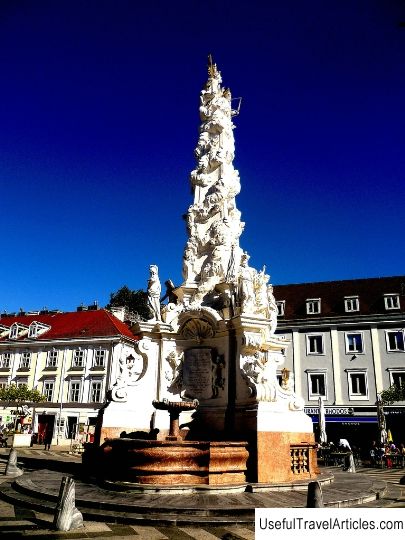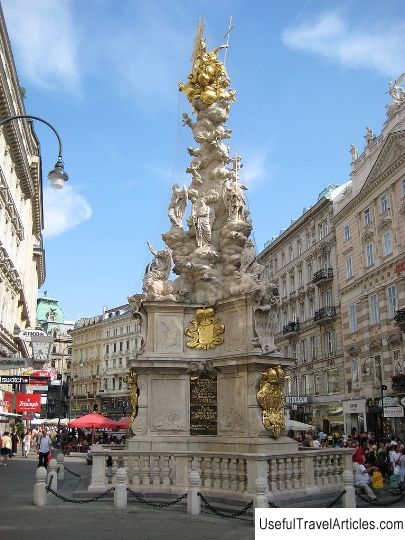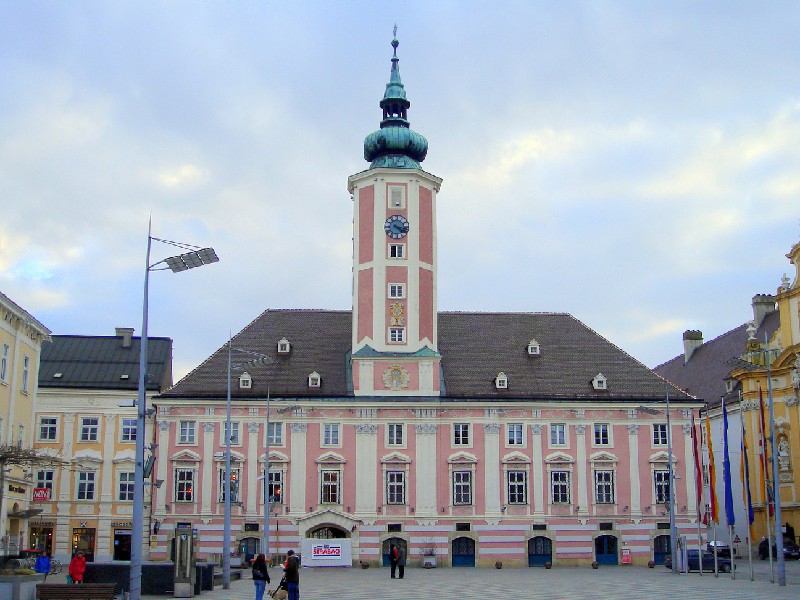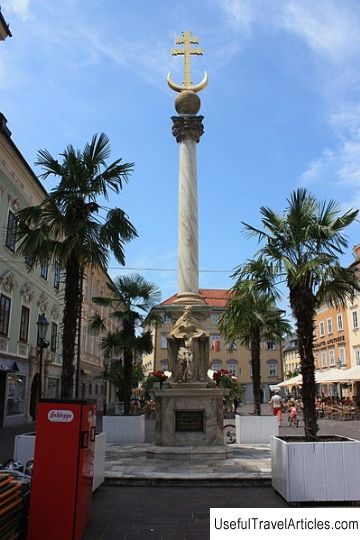Plague Column (Mariensaule) description and photos - Austria: St. Polten
Rating: 8,6/10 (1001 votes) 
Plague Column (Mariensaule) description and photos - Austria: St. Polten. Detailed information about the attraction. Description, photographs and a map showing the nearest significant objects. The title in English is Mariensaule. Photo and descriptionThe Column of the Holy Trinity - a baroque plague column was erected in the city of St. Polten in honor of the deliverance of the city's population from the plague epidemic. St. Polten is located 60 km from Vienna. This is one of the oldest cities in Austria, which was founded by the Romans and was called Elium Centium. The right to be called the city of St. Polten received in 1159. Currently, the city is home to just over 50 thousand people. The city is famous for a large number of beautiful Baroque architecture of the 17th century. During the Middle Ages, plague raged throughout Europe. Epidemics were frequent and costly. Austrian St. Polten was no exception, the epidemic often overtook him. The Column of the Holy Trinity is located on the Town Hall Square. The beautiful statue rises 15 meters. The plague column was designed by the architect Andreas Grubber at the end of the 18th century as a sign of the city's victory over the terrible plague. The construction of the monument lasted 15 years; in addition to Grubber, other sculptors and artists took part in the construction. It is known that the best bricklayers of the city also worked on the column of the Holy Trinity. The construction was completed in 1782. The column is made of white marble, decorated with graceful statues. Human figures and sacred images are a symbol of triumph over urban troubles. At the foot of the column there is a small fountain with a bowl, above there are sculptures of Sebastian, Leopold, Florian and Hippolytus. Above, reflecting the sun, golden rays of Divine glory shine, which saved St. Polten from all troubles and diseases. The Column of the Holy Trinity was recently completely restored. Now tourists and guests of the city can see it in all its beauty. The administration of the city of St. Polten spent about 45 thousand euros on restoration work.     We also recommend reading Mount Aneto description and photos - Spain: Aragonese Pyrenees Topic: Plague Column (Mariensaule) description and photos - Austria: St. Polten. |




